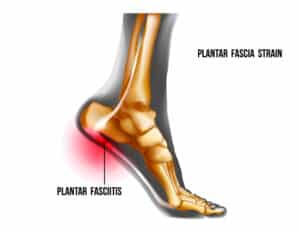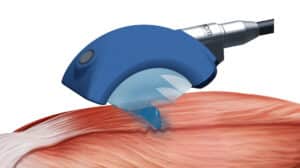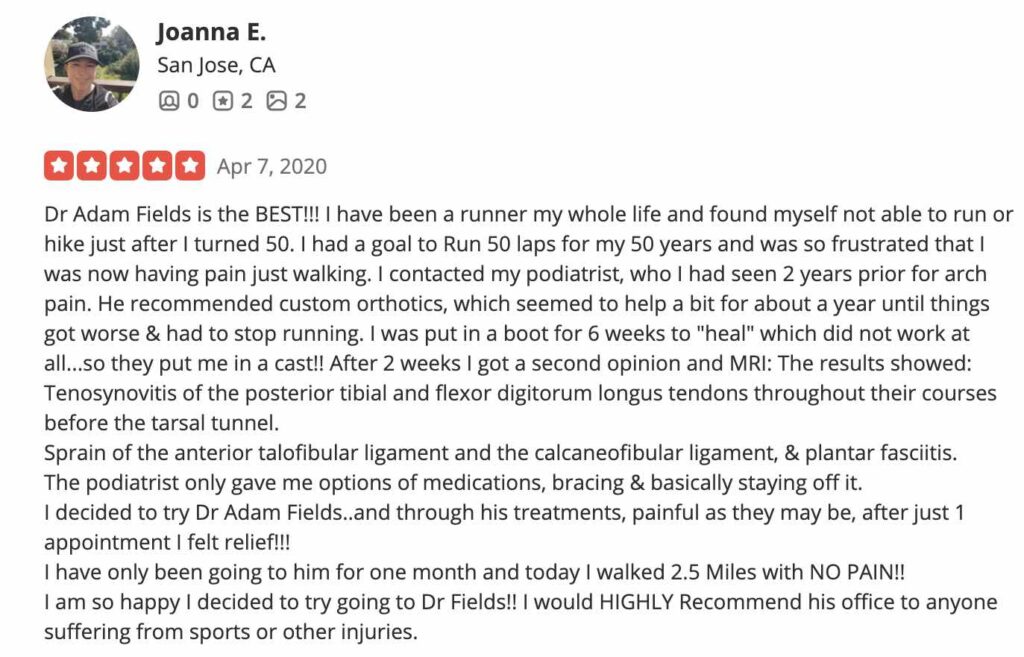🎥 Chapters
00:00 Start
0:01 The Role of Cortisol in Our Bodies
0:28 The Problem with Cortisone Injections for Plantar Fasciitis
0:48 Introducing PiezoWave: Regenerative Treatment for Heel Pain from Plantar Fasciitis
1:53 The Science Behind PiezoWave Extracorporeal Shockwave Therapy (ESWT)
2:44 Scientific Evidence and Clinical Studies for ESWT and Plantar Fasciitis
3:22 Get Your Heel Pain Feeling Better with Shockwave Therapy

Heel Pain from Plantar Fasciitis and Shockwave Therapy
Heel Pain from Plantar Fasciitis and Shockwave Therapy
With Chiropractor in Los Gatos, San Jose, SF Bay Area, CA

Heel pain can be helped with Shockwave Therapy
If you have heel pain or pain in the arches of your feet, you may have plantar fasciitis. Plantar fasciitis is a common condition characterized by chronic inflammation and a degradation of the plantar fascia The plantar fascia is a thick band of tissue that runs across the bottom of your feet. Mostly, the heel pain is felt where your arch meets your heel. Because the plantar fascia is not just inflamed and it is in a state of disrepair, the key to recovery is not just reducing inflammation. Simultaneously to inflammation resolution, there must be a regenerative component to the healing of plantar fasciitis. After all, is a repetitive stress injury where the breakdown that comes from overuse is taking over and the ability to repair from these episodes is not working fast enough. The fascia could be said to be in a rotten state and needs to be revived.
Cortisone injection versus shockwave therapy for plantar fasciitis?

Plantar fasciitis inflammation and ruptures strain can be helped with Shockwave Therapy
Establishing that the fascia is in a state of deterioration rather than inflammation, points to the preferred therapy. Corticosteroid injections work by breaking down the tissue even further. This takes pressure off of some of the challenged tissue but, also, thins the tissue. The benefit is temporary pain relief but the downside is a weaker ligament as well as the surrounding tendons and bone. With extracorporeal shockwave therapy (ESWT) low-energy focused acoustic waves or shockwaves are applied to precise depths into the plantar fascia. Firstly, this can break up brittle adhesions that are decreasing flexibility in the plantar fascia. Secondly, angiogenesis, or new blood vessels proliferation, is stimulated. This allows for growth factors to be delivered to the area and, finally, new collaged to grow. Yes, you heard that correctly. The Piezowave low energy focused shockwave therapy targets the root cause of Plantar Fasciitis by promoting tissue regeneration and resolving chronic inflammation directly at the source. So, there is not only heel pain relief but a healthier foot.
What about EPAT or radial shockwave for plantar fasciitis?
There are 2 other types of “shockwave therapy” that healthcare providers use for plantar fasciitis: radial shockwave and high-energy focused shockwave therapy. First, let’s cover radial shockwave therapy. Radial shockwave is not specific, the wave is different than the focused and it can be destructive. We had reps come and demo this technology and it was quite attractive as it is 1/6 the cost of our machine. However, when we used it we were bruised and even scabbed up when using it on less tough tissue than the foot. There have been instances when people have come to us with damaged skin, nerves and even muscles from radial shockwave. We do our best to use our class IV laser and even our focused shockwave machine to fix these problems. To conclude, if you are under 50 years old and don’t have focused shockwave available within a two hour drive and your heel pain is driving you crazy, we might recommend you get radial shockwave. However, be careful as to turn the power down and not to use on more delicate areas.
Is high-energy or low-energy focused shockwave better for plantar fasciitis?
What about high energy focused shockwave versus low energy like we use from the Piezowave? High energy shockwave therapy is used to break up kidney stones in a procedure called lithotripsy. In this case, stones in the kidney and ureter are pulverized into small fragments by means of short-duration, high-energy shockwaves that are produced outside the body by a lithotripter. Likewise, some doctors use high energy machines for plantar fasciitis. Unfortunately, this requires injections to anesthetize the feet and the anesthetic has been shown in studies to decrease the effectiveness of the biological cascade of the regeneration process. So, you get the breaking down of the scar tissue without the rebuilding of the collagen. Once again, low-energy focused shockwave therapy is the winner for plantar fasciitis.

Shockwave Therapy
By comparison, research has shown that low energy focused shockwave therapy can lead to long-lasting results, with the majority of people experiencing sustained relief from symptoms even months after the completion of treatment. In fact, the tissue is in it’s rebuilding phase for approximately 3 months post treatment. This makes Piezowave Shockwave Therapy a valuable option for individuals who have failed to find relief with other conservative treatments or who wish to avoid more invasive interventions.
As with most musculoskeletal care, you will be encouraged to stretch and strengthen the area. You will be guided on rehab protocols that are customized for you. Accordingly, this may include self massage, strengthening the intrinsic muscles of the foot, using a massage gun on your calves or foot and strengthening your brain/foot neurological connection.

Leg pain and plantar fasciitis testimonial for Dr Adam Fields
You can reach Dr Adam Fields for in-person (Los Gatos and San Jose, California) or telehealth appointments here.
About Chiropractor Dr Adam Fields
Dr Adam Fields is a practicing chiropractor in the Bay Area in Northern California and helps people daily in his office with many challenges that can be helped by shockwave therapy from tendinopathies, arthritis, cartilage regeneration, post surgical scar tissue, pelvic pain, altered biomechanics and more. He uses Endonasal Cranial Adjusting, the Muncie Technique, Extracorporeal Shockwave Therapy (ESWT), Class IV Laser Therapy, posture correction, lifestyle modification, muscle work, and other techniques to help his patients.
Shockwave Therapy and Plantar Fasciitis Research
*Long Term Effectiveness of ESWT in Plantar Fasciitis in Amateur Runners
https://www.ncbi.nlm.nih.gov/pmc/articles/PMC9737564/
*Extracorporeal shock wave therapy is effective in treating chronic plantar fasciitis
https://www.ncbi.nlm.nih.gov/pmc/articles/PMC5403108/
*The effectiveness of radial extracorporeal shock wave therapy (rESWT), sham-rESWT, standardised exercise programme or usual care for patients with plantar fasciopathy: study protocol for a double-blind, randomised, sham-controlled trial
https://trialsjournal.biomedcentral.com/articles/10.1186/s13063-020-04510-z
*Long-term Results of Extracorporeal Shockwave Treatment for Plantar Fasciitis
https://journals.sagepub.com/doi/10.1177/0363546505281811
*The Effect of Low Dose Extracorporeal Shock Wave Therapy (ESWT) on Plantar Fasciitis: A Trial Study in Queen Mary Hospital
https://journals.sagepub.com/doi/10.1016/j.jotr.2014.10.005
*Extracorporeal shock wave therapy is effective in treating chronic plantar fasciitis: A meta-analysis of RCTs
https://www.researchgate.net/publication/316052744_Extracorporeal_shock_wave_therapy_is_effective_in_treating_chronic_plantar_fasciitis_A_meta-analysis_of_RCTs
